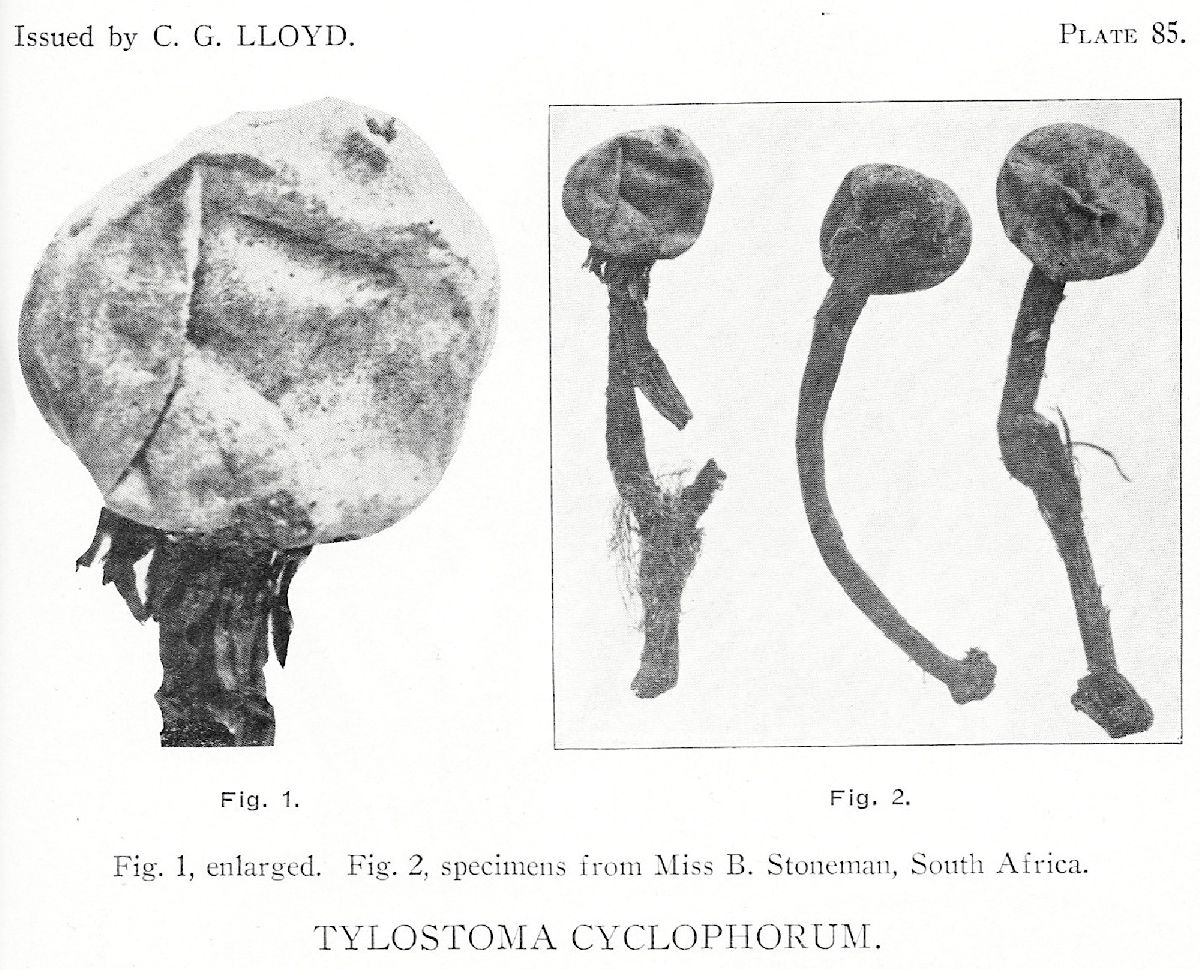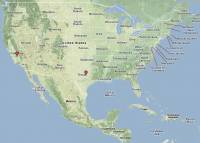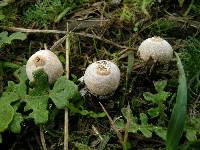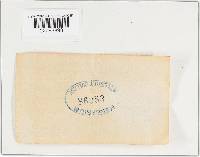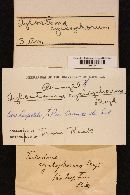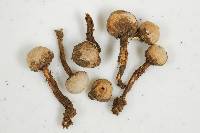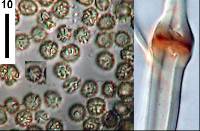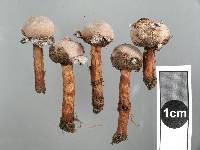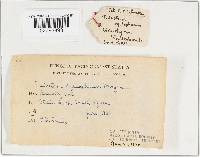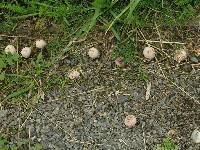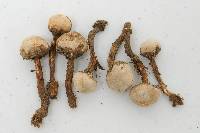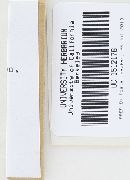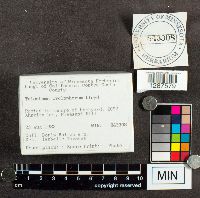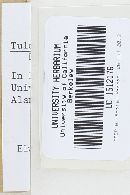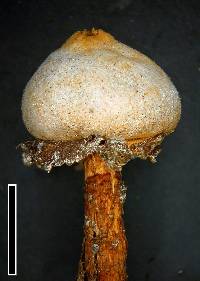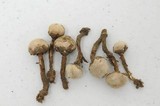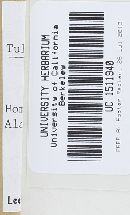
|
|
|
|
Family: Agaricaceae
|
Wright J.E. 1987. Bibliotheca Mycologia 113: 87. Tulostoma cyclophorum Lloyd (Figs. 33-35; Pls. XVIII: 1-12; XXX: 1,4,6,7; XXXI: 1). - The Tylostomeae, p. 25, pl. 85, figs. 1-2. 1906. Etym.: the name probably refers to the peridium having a scutellate mouth. = T. berteroanum (Lev.) Sacc. forma pampeana Spegazzini, An. Mus. Nac. Buenos Aires 6: 187-188 (Fungi argentin' novi vel critici n° 297). 1898. T. recifensis Batista & Vital, An. Soc. Biol. Pernambuco 13: 127, figs. 5-10. 1955. T. heroica Batista & Vital, ibid. 13: 127-128, figs. 1-2. 1955. = T. nanica Batista 7 Vital, ibid. 13: 128-129, figs. 3-4. 1955. = T. pampeanum (Lév.)J.E.Wright, Bol. Soc. Arg. Bot. 18 (1-2): 133, fig. 5. 1977. = T. berteroanum (Lev.)Sacc sensu Speg. et auct. non Leveillé. = T. lejospermum Speg. var. microsporum Speg. "in sched.". Spore-sac globose to globose-depressed, up to 20 mm diam, the usual size being abt 12-15 mm diam. Exoperidium typically membranous, tough, when young tenaciously covering the endoperidium, dirty brown outwardly and yellowish brown to white inside. Endoperidium finally uncovered, velvety to furfuraceous due to the presence of numerous "mycosclereids", when old tough and papyraceous; dark isabelline to pinkish ochre, sometimes darker and more yellowish with ferrugineous hues, whitish when weathered. Mouth typically fibrillose-fimbriate, scutellate, large, mammose, fimbriate with age and elastic, slightly darker than the rest of the endoperidium. Gleba ferrugineous to ochraceous ferrugineous. Socket more or less distinct separated from the stem, with a membrane formed by acute , usually well-developed scales, reddish brown. Stem 25-65 x 2-4 mm, averaging 30 x 2.5 mm, substriate, never really scaly or only slightly so in the basal portion, generally decorticating in long threads; subequal, light to dark brown or with reddish hues, slightly contorted, basally ending in a small mycelial bulb. Endoperidium formed by threads similar to those of the capillitium, and with more or less numerous "mycosclereids" (Wright, 1955), which may be large or small, dark yellowish to brown under L.M., most (84.4)-105232.3 x 17.6-53 µm, with a rather thick walls up to 10 µm thick, which are outgrowths after septation of an exoperidial hypha and later become dislodged. Spores yellowish to yellowish brown, with minute, irregularly distributed, rather scant verrucae that anastomose in crests under L.M., globose to irregularly ellipsoid, 3.2-4.6 x 2.8-4 µm. Under SEM, the ornamentation appears as numerous anastomosed crests or verruciform crests which are very notable and confer the spores an almost reticulate aspect, uneven and partial. Capillitium subhyaline to slightly yellowish, profusely branched and septate, (1.8)-2.1-9 µm diam, with thin to thick walls and lumen generally visible to scant, rarely lacunar or absent, not distinctly swollen at the brown, frequent, horizontal to oblique septa. Habitat: shady and clayish soils in subexposed areas in regions with vegetation, generally among herbs; solitary to, more often gregarious never found in truly desertic or very arid regions. Distribution: Africa: South Africa; North America: United States (California, Texas, probably introduced). South America: Argentina, Brazil, Paraguay and Uruguay, where it is the most common species. Asia: Middle East: Israel. Europe: France. Australasia: Australia. Holotype: South Africa, leg. Stoneman (Herb. Lloyd n° 4495, BPI!). Illustration: Lloyd (op. cit.), Wright (1977), Bottomley (1948, Pl. LXVI, 2). |
|
|
|

